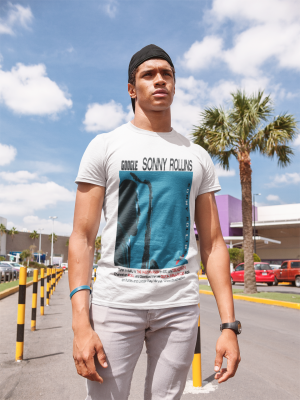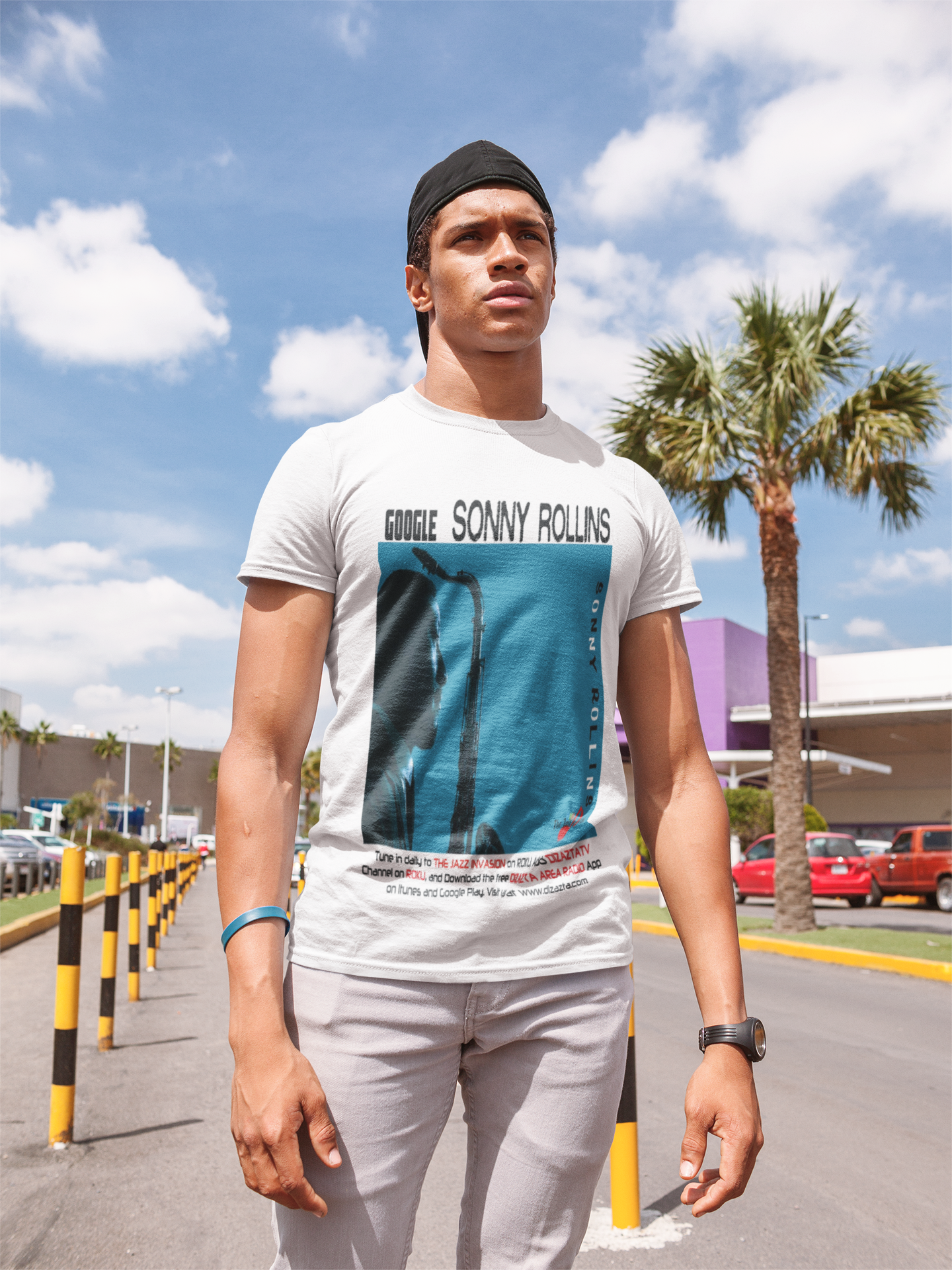Sonny Rollins
Brown and Max Roach at Basin Street and Sonny Rollins Plus 4. After the deaths of Brown and the band's pianist, Richie Powell, in a June 1956 automobile accident, Rollins continued playing with Roach and began releasing albums under his own name on Prestige Records, Blue Note, Riverside, and the Los Angeles label Contemporary.
His widely acclaimed album Saxophone Colossus was recorded on June 22, 1956, at Rudy Van Gelder's studio in New Jersey, with Tommy Flanagan on piano, former Jazz Messengers bassist Doug Watkins, and his favorite drummer, Roach. This was Rollins's sixth recording as a leader and it included his best-known composition "St. Thomas", a Caribbean calypso based on a tune sung to him by his mother in his childhood, as well as the fast bebop number "Strode Rode", and "Moritat" (the Kurt Weill composition also known as "Mack the Knife"). A long blues solo on Saxophone Colossus, "Blue 7", was analyzed in depth by the composer and critic Gunther Schuller in a 1958 article.










































